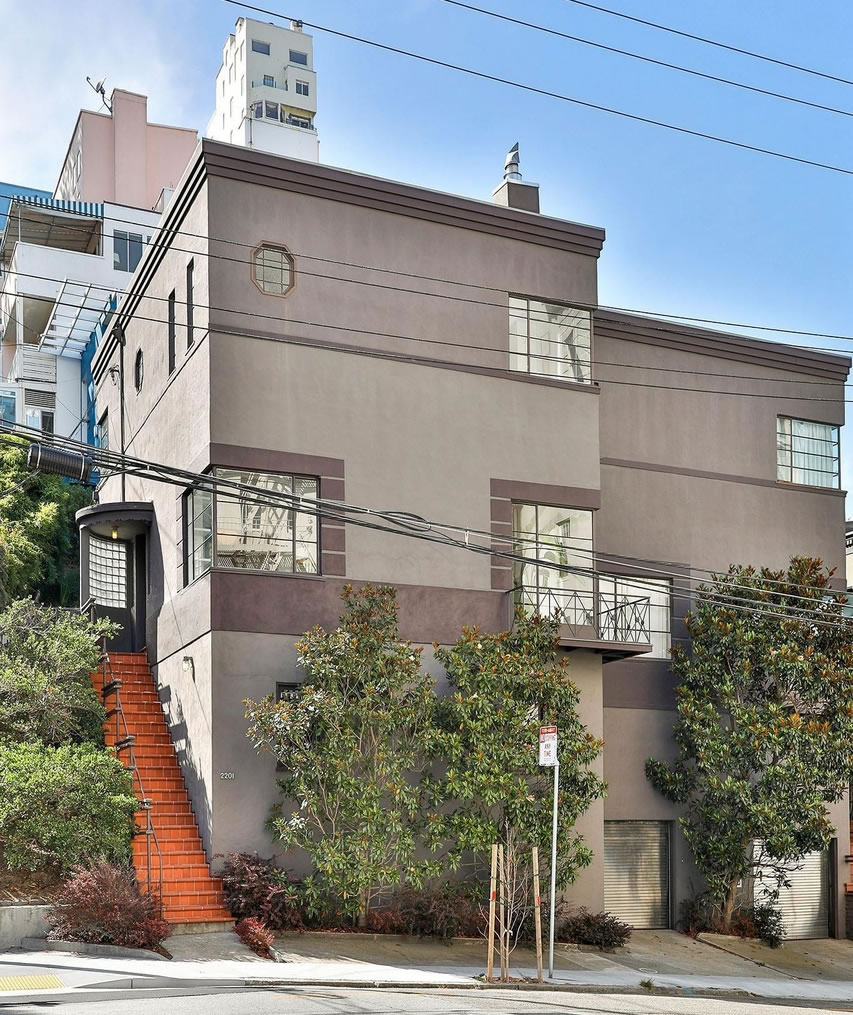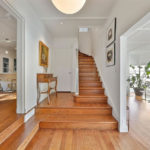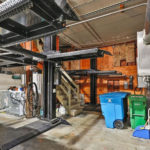The three-bedroom Russian Hill townhome at 2201 Leavenworth street, which offers “fabled Bay views,” a remodeled kitchen with a restored Wedgewood stove, stacked parking for two cars, and access to the building’s shared rooftop deck with panoramic views, traded for $3.2 million in March of 2016, establishing a neighborhood comp at $1,576 per square foot.
The 2,030-square-foot, “House-like Russian Hill Gem” returned to the market priced at $3.195 million in late 2018, pitching “This is San Francisco… Don’t miss out!” but was withdrawn from the MLS in March of 2019, with a reduced asking price $2.695 million having failed to garner an acceptable “over asking” offer.
And the “gorgeous” townhouse-style condo, with “ample natural light” and “coveted views of iconic San Francisco landmarks,” is now back on the market and listed anew for $2.8 million, an “at asking” sale at which certainly wouldn’t be “cheap” at $1,379 per square foot but would be 12.5 percent cheaper than in February of 2016 on an apples-to-apples basis.
Now’s the time to tell if you think you know the market for Russian Hill. Keep in mind that the frequently misreported index for “San Francisco” condo values is “still up 21 percent!” over the same period of time and that Russian Hill is a rather “established San Francisco neighborhood.”










$2.4M
I know nothing.
The HOA dues of $385 per month are exceptionally “cheap” even if they don’t cover the regular maintenance required for the two-car stacker in the garage. The eventual buyer will probably own a large luxury SUV, and in order to accommodate it, the stacker equipment will have to be removed, anyway.
I don’t have any special knowledge of the market in Russian Hill right now, but I’ll say it goes for $2.53 million. I would expect this to sit on the market for quite a while.
Does anyone here actually have any experince using “stacked” parking ?? I understand the concept – not much to understand really – but in practice it seems incredibly inconvenient: having to move the lower car ever time one wants access to the upper one, then, presumably, move it back again…and do this all over again when the upper comes back. For people who can afford multi-million dollar houses – i.e. the time is money crowd – this doesn’t seem very cost effective. Perhaps the more sophisticated versions where there’s a pit and the lower is actually lowered out of the way, but that doesn’t look like the ase here.
The few private stackers I’ve seen kept the “weekend” car on the upper and the “everyday” car parked on the floor below. The weekend car (something less practical like a rag-top) only comes out to drive around wine country.
Yeah I think it might work if the cars have clearly defined roles, and one isn’t used much; but that just seems far removed from what most households experience. In this case, of course, the argument would be there’s only a one-car garage otherwise,, so you’re not any worse off….but still seems like a rather weak amenity.
Wonder how they perform in an earthquake. They are cantilevered off a single steel column bolted to a non-structural slab.
We have a stacker and only own one car. The other spot is for when guests visit, cleaner comes, etc. It doesn’t require much coordination for these uses and is very convient.
it would feel weird to spend this kind of money (about 3 million) and buy what is essentially 50% of a house (albeit a nice one) with a stranger going in on the other half. the alternative of simply buying a single home that you own wholly including the land, even if not in this neighborhood, is a more sound choice at 3 million.
Which is why I think that ultimately, the elimination of single family zoning city wide in the last couple of years will just result in the bidding up of remaining SFHs and so push up the price of houses. This will be exactly the opposite of what the YIMBY crowd and State Senator Scott Wiener promised would happen.
Unintended consequences? Oh, no: that‘s not possible. Of course, the underlying assumption here is that the legislation will actually do something (and notice I specifically said “do,” not “accomplish”).
UPDATE: The list price for 2201 Leavenworth has just been reduced to $2.595 million, a sale at which would be considered to be “at asking” according to all industry stats and aggregate reports but would now represent an 18.9 percent drop in value on an apples-to-apples basis, below its comp setting price in February of 2016.
UPDATE: 2201 Leavenworth has just been relisted anew with an official “1” day on the market and a further reduced list price of to $2.45 million, a sale at which would be considered to be “at asking” according to all industry stats and aggregate reports/scores but would represent a 23.4 percent drop in value on an apples-to-apples basis, below its comp setting price in February of 2016.